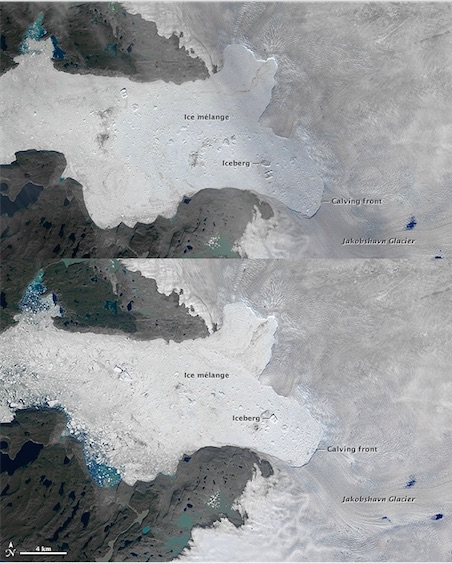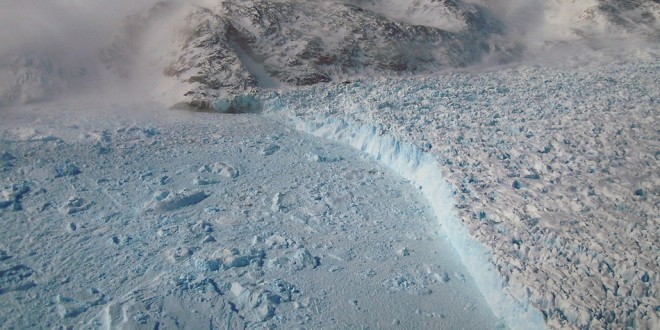Greenland Massive Glacier Calf Spotted from Space.
New NASA satellite images reveal that the Jakobshavn glacier may have lost a massive chunk of ice, possibly setting a new record.
The new images that NASA snapped from the Operational Land Imager (OLI) on the Landsat 8 satellite were acquired 16 days apart in August 2015. The top image shows the position of the glacier’s front on Aug. 16 after the ice calved. The bottom image shows the glacier before the event.

“The calving events of Jakobshavn are becoming more spectacular with time, and I am in awe with the calving speed and retreat rate of this glacier,” said Eric Rignot, a glaciologist at the Jet Propulsion Laboratory, in a news release. “These images are a very good example of the changes taking place in Greenland.”
Satellite images reveal that the ice broke off sometime between Aug. 14 and Aug. 16. Some observers speculated that the area of ice lost could very well be the largest on record. However, these estimates are preliminary, and satellite images from before and after an event cannot show whether the ice was lost all at once or during a series of smaller events.
“What is important is that the ice front, or calving front, keeps retreating inland at galloping speeds,” said Rignot.
The new findings are important when measuring how much ice is lost over time. More specifically, it reveals how climate change may be impacting the glacier.
Agencies/Canadajournal
 Canada Journal – News of the World Articles and videos to bring you the biggest Canadian news stories from across the country every day
Canada Journal – News of the World Articles and videos to bring you the biggest Canadian news stories from across the country every day



